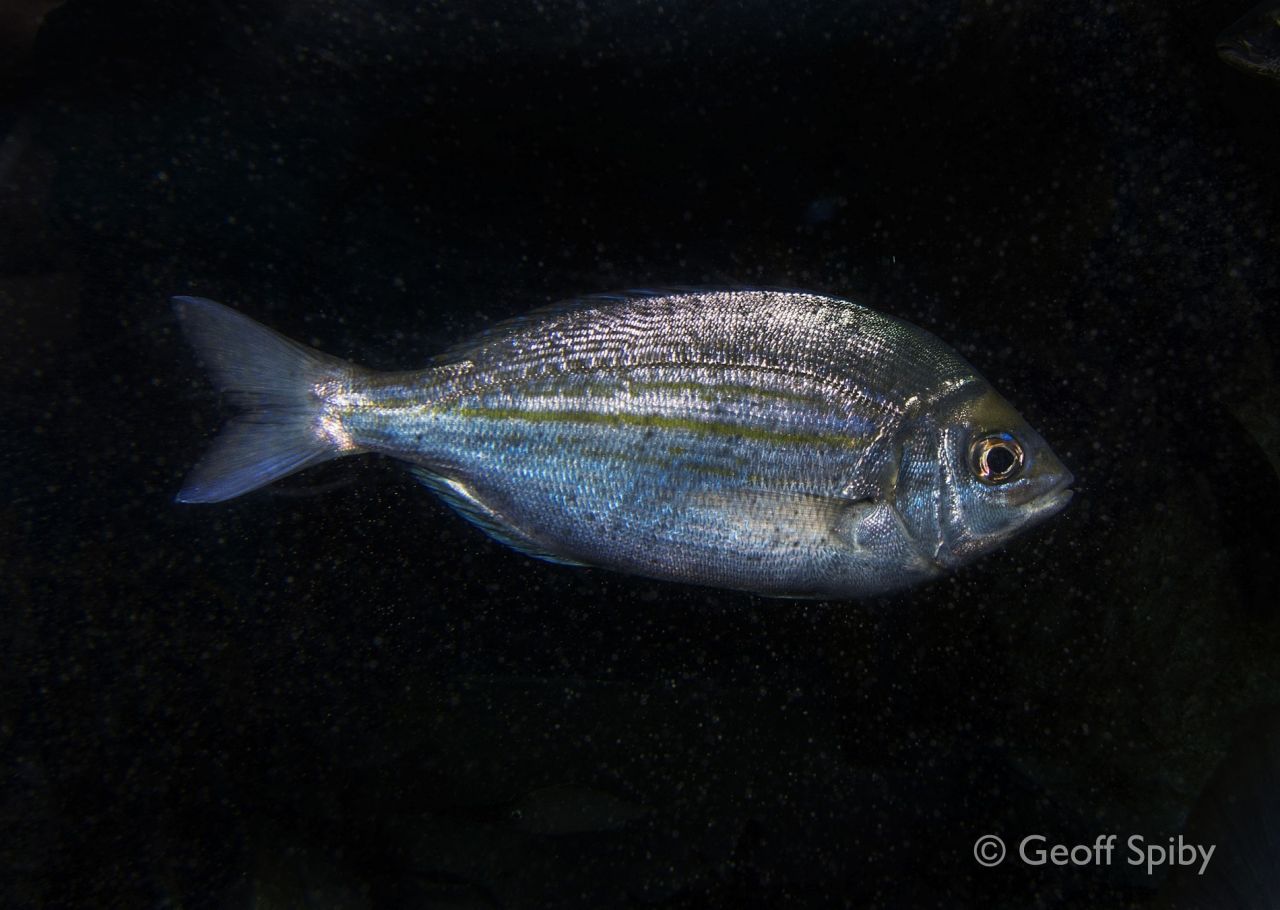Appearamce and lifestyle:
The steentjie (Spondyliosoma emarginatum) is a blue-grey fish that has an oval-shaped body with several faint yellow horizontal stripes on its flanks and dark blue-grey fins. It has several sets of both incisors and a row of molars. They use this combination of teeth to pick up bottom-dwelling invertebrates and crush their shells. As they mature they become more omnivorous and will graze on algae. During spring and summer months, male steentjies will take on brighter blue and yellow colours and will construct nests in the sand. Once spawning has taken place, the males will remain at the nest to guard the eggs until they hatch.
Habitat:
The steentjie occurs in large shoals above shallow, rocky reefs on the coasts of the Western Cape, Eastern Cape and southern KwaZulu-Natal.
Diet:
They are omnivorous animals that eat small crustaceans, molluscs, and algae.
Threats:
They are not endangered, but some of the threats they may face are habitat loss, climate change and pollution.
